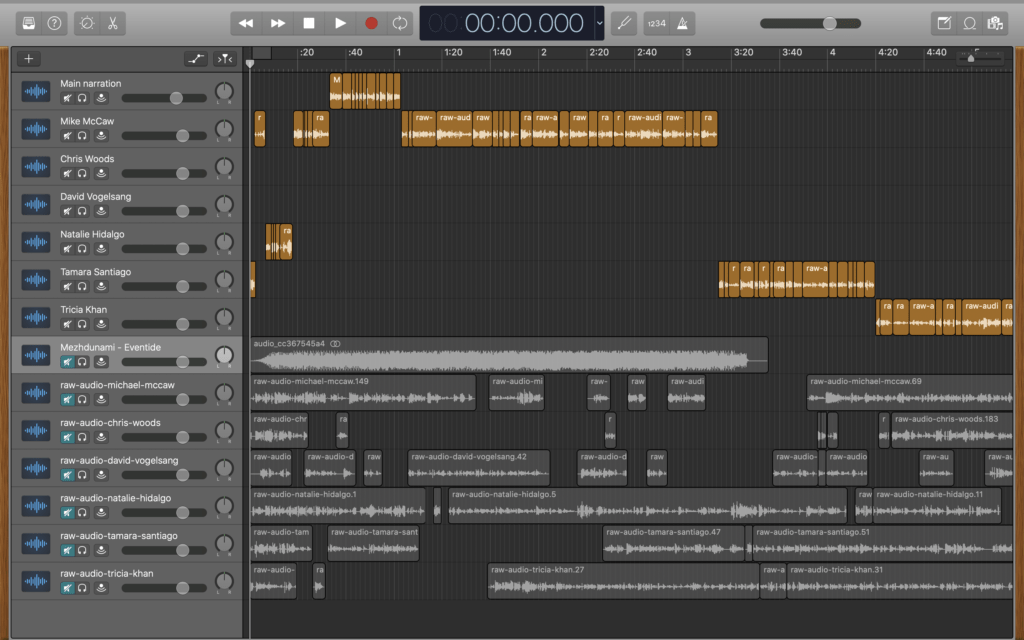Audio Design Principles
My intention was to make this both engaging and educational, so I included some clips of interview banter as well as some uplifting background music at the beginning and end. In following with NPR’s training on how to begin audio stories, I decided to dive right in with narrative elements—specifically, some of the immediate responses I got from my interviewees when I asked them reflective questions. By starting this way, I want to spark the listener’s curiosity before then supplying them with the rest of the learning content.
I was intentional with the questions I asked of my interview subjects because I wanted their responses to prompt moments of connection and reflection with the listener, giving them opportunities to cognitively engage with the content. If combined with a formal learning plan or experience, this could also serve as pretraining (Mayer & Moreno, 2010) for the learning to establish a foundation to reduce cognitive load in later learning sessions.
References
Edy, L. T., Allen, T. D., Evans, S. C., Ng, T., & DuBois, D. L. (2008). Does mentoring matter? A multidisciplinary meta-analysis comparing mentored and non-mentored individuals. Journal of Vocational Behavior, 72(2), 254–267. https://doi.org/10.1016/j.jvb.2007.04.005
Kammeyer-Mueller, J. D., & Judge, T. A. (2008). A quantitative review of mentoring research: Test of a model. Journal of Vocational Behavior, 72(3), 269–283. https://doi.org/10.1016/j.jvb.2007.09.006
Mayer, R. E., & Moreno, R. (2010). Techniques that reduce extraneous cognitive load and manage intrinsic cognitive load during multimedia learning. In Plass, J. L., Moreno, R., & Brünken, R. (Eds.) Cognitive load theory (pp. 131–152). Cambridge University Press.
Attributions
Music by Mezhdunami from Pixabay.
Thumbnail photo from Christina @ wocintechchat.com on Unsplash.
